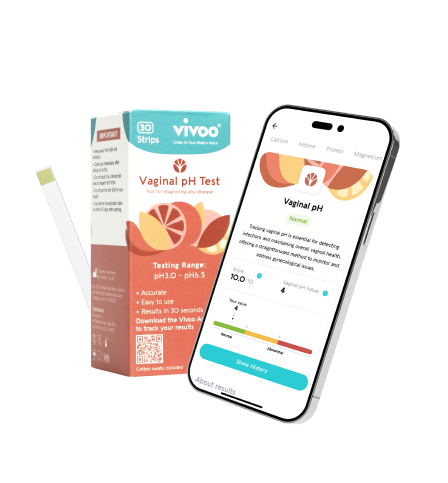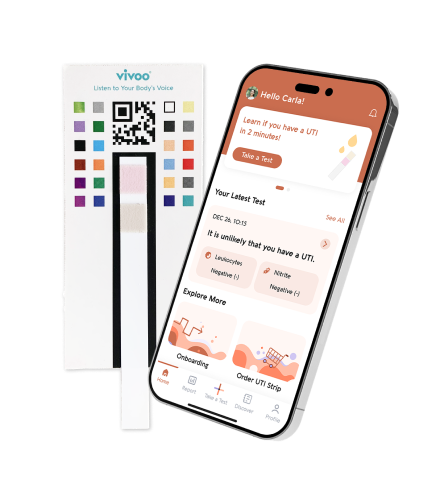Vitamin D, sometimes known as "the sunshine vitamin," is a hormone that your body produces when your skin responds to sunlight and other nutrients. Vitamin D is not naturally contained in many foods, yet it is necessary for strong bones and a functional immune system, among other things.
According to research that examined national health data from 2001 to 2010, 28.9% of Americans are vitamin D deficient, 40.1% are vitamin D deficient, and less than 30% have adequate vitamin D to sustain optimum health. It is estimated that almost half of the world's population is deficient in vitamin D.
Fortunately, measuring your vitamin D levels is simple. Continue reading to find out about four of the finest at-home vitamin D tests. They may assist you in determining if your vitamin D levels are within the required range quickly.
What is the function of vitamin D?
Vitamin D is a fat-soluble vitamin that may be stored in the body for an extended period of time. This crucial vitamin aids in the absorption of calcium and phosphorus, allowing you to maintain strong bones and muscles (two other micronutrients essential to healthy bones).
Adults with chronically low vitamin D levels may be more prone to fractures.
Furthermore, studies reveal that vitamin D is crucial for more than simply bone and muscular function. A lack of vitamin D may raise the risk of heart disease, diabetes, autoimmune illness, and cancer.
Low vitamin D levels have also been linked to lower cognitive performance in elderly people, while the effects of vitamin D treatment on cognition are unclear.

What is considered vitamin D deficiency?
The quantity of vitamin D in your blood is measured in nanograms per milliliter (ng/mL) and as nanomoles per liter (nmol/L).
- Levels of 50 nmol/L (20 ng/mL) or above are adequate for most people for bone and overall health.
- Levels below 30 nmol/L (12 ng/mL) are too low and might weaken your bones and affect your health.
- Levels above 125 nmol/L (50 ng/mL) are too high and might cause health problems.
What causes a lack of vitamin D?
With almost 40% of the adult population in the United States categorized as vitamin D deficient, you may be wondering what causes this.
Vitamin D insufficiency (blood levels below 12 ng/mL) is far less prevalent, especially in the United States, where many foods, such as milk and cereal, are fortified with vitamin D.
However, many individuals have vitamin D levels that are less than ideal. And, considering the significance of vitamin D for musculoskeletal health, heart health, immunity, and even cancer prevention, this is worth noting.
People who are more likely to acquire vitamin D insufficiency include those with little sun exposure, people with darker skin tones, people with conditions that limit fat absorption, and people with obesity or who have undergone gastric bypass surgery.
What exactly is a vitamin D test?
A vitamin D test determines the amount of vitamin D in your bloodstream. This is a bit more involved than you may imagine since vitamin D goes through multiple transformations before it can be utilized by your body.
The vitamin D you consume and naturally make via sun exposure begins in an inactive state known as 25-hydroxyvitamin D. (25-OH D). The liver and kidneys then convert 25-hydroxyvitamin D (25-OH D) to the physiologically active form, 1,25-dihydroxyvitamin D.
The total level of 25-OH D in your blood is measured by the majority of vitamin D tests. This is due to the fact that 25-OH D has a longer half-life than 1,25-dihydroxy vitamin D. (meaning, it remains in your bloodstream longer and is a more accurate measure of how much vitamin D your body has to work with).
25-OH D remains in circulation for about 14 days. In contrast, the half-life of 1,25-dihydroxy vitamin D is just a few hours. Its levels may not decline with vitamin D insufficiency or alter in a noticeable manner until the deficit is severe.

How is a vitamin D deficit identified?
A vitamin D deficiency can be identified through a simple blood test called 25-hydroxyvitamin D test. This test measures the level of 25-hydroxyvitamin D, the primary form of vitamin D in the blood. The test results are usually given in nanograms per milliliter (ng/mL).
The normal range for vitamin D levels is generally considered to be between 20 ng/mL and 50 ng/mL A level below 20 ng/mL is generally considered to indicate a deficiency.
Your healthcare provider may also consider other factors, such as your medical history, symptoms, and overall health, when determining if you have a vitamin D deficiency.
What is a vitamin D blood test called?
The 25-hydroxyvitamin D (OH)D test is the most commonly used vitamin D blood test. This tests for the most widely distributed form of vitamin D and is now regarded as the greatest predictor of vitamin D availability to the body.
When should your vitamin D levels be tested?
Vitamin D is an essential nutrient for maintaining strong bones and overall health. Your vitamin D levels should be regularly tested when you have risk factors for deficiency such as limited sun exposure, dark skin, being overweight, or having a medical condition that affects your body's ability to absorb vitamin D.
Additionally, if you have symptoms of vitamin D deficiency such as fatigue, muscle weakness, or bone pain, it's important to get your levels tested. It is also recommended to have your vitamin D levels checked periodically as part of your routine health check-up. Your healthcare provider may also recommend testing if you are at risk of osteoporosis or other conditions related to low vitamin D levels. If you have been experiencing any symptoms and/or are in one of the at-risk categories, you should consider checking your vitamin D levels regularly.
Do vitamin D blood testing at home work?
Yes, they should work if you choose a reputed home blood test brand that sends you a decent testing kit with clear instructions, employs certified labs to analyze your blood samples, and properly details/communicates your findings.
Obviously, you must take responsibility for carefully following instructions and performing 'your part' at home since this is the most crucial aspect to get right.







